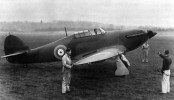
Hurricane MKI553 views The new Mk.I included a deHaviland or Rotol constant-speed metal propeller, ejector exhaust stacks for added thrust, metal-covered wings, armour and other changes. At the start of the war the RAF had taken on about 500 of this later design, and it formed the backbone of the fighter squadrons during the Battle of France and into the Battle of Britain.
Although it may have been an older design, the Hurricane was still a worthy fighter on its own and a reasonable match for the Messerschmitt Bf 109 it faced. In the photo The first production Hurricane Mk.I at [[Brooklands]], November 1937.
|
|
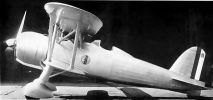
FIAT CR 42 falco548 viewsThe last of the biplane fighters, the Falco flew for the first time on 23 May 1938. It served on most fronts, first as a fighter, and quickly changed to ground support due to the inability of the aircraft to tackle modern allied aircraft. The Fiat CR42 was considered the most agile biplane fighter of WWII, and was certainly a hard target to hit, for the more modern but less maneuverable monoplanes. The Falco was lightly armed, as most of the fighters of it's time were, with 2 12.7mm Breda-SAFAT and still now holds the record of the fastest biplane (439 km/h) in WWII. At the time of El Alamein it was used as ground attack plane. The Falco finished its carreer as a night fighter defending Northern Italy.It was very nice to fly and very manouvrable, with a good pilot could even face the first series Hurricanes.
|
|
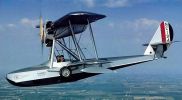
SavoiaMarchettiS-56B546 views
|
|
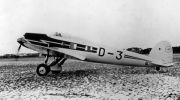
Heinkel He 70545 viewsThe Heinkel He 70 was an aircraft designed as a fast mailplane, inspired by the Lockheed Orion. Its streamlining inspired many other designs. Although useful, it had a relatively brief commercial career, before it was replaced by types which could carry more passengers. As a combat aircraft it was a not a great success, because it rapidly became outdated.
|
|
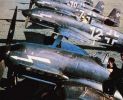
Heinkel He 100531 viewsDisappointed by the loss of the Luftwaffe's fighter orders to BFW and it's Bf 109 and the failure of the He 112, Heinkel set out to build a lighter and faster fighter that was also cheaper and easier to build. Even though the He 100 broke several world speed records, the RLM was solidly supportive of the Bf 109 and failed to order the He 100 into production. Six prototypes were eventually sold to the Soviet Union and three He 100D-0 went to Japan. The three He 100D-0's being armed with two MG 17 and a 20mm MG/FF. The remaining 12 He 100D-1 fighters were used to form a Heinkel-Rostock factory defense unit
|
|
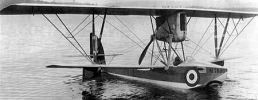
macchi-m5528 views
|
|
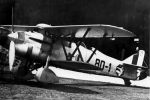
FIAT CR 32525 viewsEasily recognizable by its annular radiator and its closely cooled engine ,The C.R.32 "Freccia"(Arrow), was an excellent biplane fighter, being robust and fast. The C.R.32 was a single seat biplane fighter.The armament consisted of two 7.7mm Breda Safat machine guns (upgraded at 2 12.7 on later version) mounted on the side of the cooling radiator. Designed by Italian engineer Celestino Rosatelli, after first flew (in 1933),was built above in 1300 planes (including Spanish licensed production). In 1940, 300 planes were still in 1st line service.
|
|
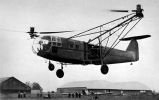
focke achgelis fa223524 views
|
|
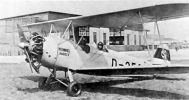
Heinkel He 72524 viewsThe Kadett was introduced in the Luftwaffe in 1933, when the latter was not yet official. It remained one of the most wideley used German primary trainers until 1944. Although it lacked power, it was a pleasant plane to fly and quite comparable to the British Tiger Moth.
Almost all Kadett were He 72B, of which the prodcution took place from 1934 until 1936. After that, only models with a limited number of examples remained in production (He 72BW, He 72B-3). A single example was tested by the Japanese Navy as the "KXHe1"
|
|
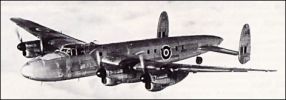
Avro Lancastrian524 viewsIn 1944 Avros, at their Waddington factory, began a conversion of the Lancaster, to follow that, which had been made by Victory Aircraft in Canada. This was to make an aircraft for long-range navigational flights. The nose and tail sections were modified and extra fuel tanks added. The new machine was named the Avro Lancastrian; and was delivered to The Empire Air Navigation School at RAF Shawbury.The first plane was called Aries, and it set off on the first, circumnavigation of the world. QANTAS airline of Australia used Lancastrians, on their London to Australia flights. BSAA also used Lancastrians on regular flights to South America; as did Flota Aerea Mercante Argentina. The Canadian Authorities had established a regular route from Canada toBritain earlier. This plane had a range of 4,100 miles with a 7,500 lb payload.
|
|
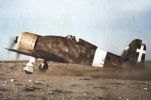
g50 foto2524 views
|
|
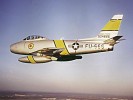
F-86 Sabre524 viewsThe first proposals for the North American Aviation F-86 Sabre were made in 1944, but construction was not begun until after World War II. Many elements of German jet design were implemented in the Sabre. The XP-86 prototype, which would become the F-86 Sabre, flew on 1 October 1947. It often was placed in combat against the superior Soviet MiG-15. Superior US pilot training versus Korean and Chinese training accounted for some of the US success in the air war. Other factors included Soviet pilots' reluctance to engage Americans over battlefields for fear of being captured. Technically, the Soviet Union was not involved in the Korean War, and as such could not afford captured pilots. The Sabre was the first U.S. production aircraft to be fitted with ejector seats. Approximately 9500 were constructed. Several are still held by private owners.
|
|
|
|